Star Trek Away Team Preview
We take a look at the latest build of Activision's upcoming Star Trek real-time tactical game.
Given the mission of the USS Enterprise in the original Star Trek, it's only fitting that the computer games inspired by TV shows and movies have boldly gone where no franchise has gone before. Over the past 15 years, we've seen Trek-based games cover just about every genre imaginable: text-based and graphical adventures, turn-based empire building, real-time strategy, space-combat simulations, first- and third-person shooters, interactive movies and encyclopedias--name a way of translating the hugely popular world of Star Trek into a compelling interactive experience, and it's probably been tried at some point.
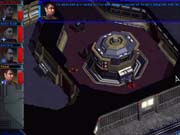
But with Star Trek: Away Team, Activision has found a new creative avenue for its Star Trek license: squad-based tactical missions. Of course, it can be argued that Activision's highly acclaimed Elite Force involves squad-based action since you're accompanied by various crewmembers on each mission; however, you have no real control over them. For instance, you might have to provide cover fire while one of the crewmembers performs an important task. Mainly, the crewmembers are there to provide firepower and add Trek ambience to the first-person action. And though 1995's A Final Unit frequently puts you in control of away teams, the emphasis is on problem-solving and exploration rather than combat and stealth. In short, there's never been a Star Trek game quite like Away Team.
To create Away Team, Activision turned to Reflexive Entertainment, whose only completed game to date is a 2D space shooter called Swarm. An odd choice? Not really, says Eric Dallaire, Activision's producer for Away Team. He points out that while the company is relatively young, all of its employees are talented veterans of the games industry. He also points out that Reflexive was already developing a game engine that would work well for Away Team. "Reflexive was creating a title called Zax, and it used a very sleek 2D isometric engine with powerful level-editing tools," says Dallaire. "Activision and Reflexive both saw a lot of potential in the engine and decided that it would be perfect for the squad-based Star Trek game we wanted to create."
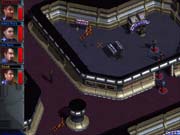
One of the primary challenges that faces any developer creating a title based on Star Trek is bringing something new to the experience while remaining true to the Star Trek universe. For Away Team, Reflexive and Activision have not only added new weapons and technologies (all approved by Paramount, of course) but have also altered the basic approach that the Federation takes when it deals with alien races. For Star Trek fans who feel the Federation all too often takes the "let's please everyone" approach when it deals with volatile situations, Away Team will be satisfyingly different: You can't ignore the objectives in the game, but let's just say that you can get away with quite a bit of mischief--provided you aren't caught in the process.
Teamwork Pays Off
Set immediately after the Dominion War, Away Team portrays a Federation that has slowly realized that special circumstances require special--and very discreet--resolution. The result is the creation of the USS Incursion, a stealth vessel that uses various prototype technologies to secretly enter hostile areas and transport teams to "hot spots" to gather information and neutralize emerging threats while avoiding detection. Imagine a Star Trek version of a Navy SEAL team whose members are experts in a broad array of fields, and you've got a good idea of what Away Team is all about.
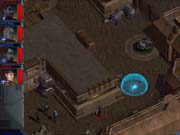
As captain of the Incursion, you receive orders directly from Starfleet. Once you've been briefed on mission goals, you select those team members you feel are best suited for the operation. There are 17 team members to choose from, and most of the game's 18 missions let you select between three and six of them. Each member is a specialist in one of five fields--medical, security, engineering, science, and command--that define what sort of items they can carry and which tasks they can perform. A medical specialist won't be able to carry a phaser rifle, for instance, while a member from the science field can't use a medical hypospray.
What's more, two of the five areas of expertise allow characters to use (and gain) special abilities. Science officers can learn to hack computers and security systems, extract elements from flora for healing and inflicting damage, and operate plasma suppression fields to render enemy weapons useless for a short time. Engineering specialists can repair computer systems, learn to enhance weapons and items temporarily, and operate a visual dampening field to render all team members within the vicinity invisible.
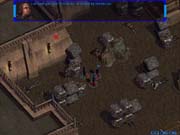
But there are exceptions to the rules. Through a command specialist, Captain Marcus ReFelian can disable security systems--something usually reserved for someone from the science field. Another commander, the Betazoid Yulana Oxila, carries a limited number of hypospray charges for healing injured team members. And Ivan Verov from the science field can use the personal visual dampening band, which makes him invisible to life-forms (but not to detection devices). Carefully perusing each character's skill sets is an incredibly vital part of each mission, because often you can find a certain character who has the items and skills necessary to fill several objectives--a good thing, since smaller teams are generally easier to control.
Many of the weapons and items that your team carries will be instantly familiar to Star Trek fans, but there are also a slew of new gadgets that have been invented specifically for the game. These new technologies serve a dual purpose: They keep the action fresh, and they provide a high degree of strategic depth. In Away Team, there's almost always more than one way to overcome the obstacles you face in each mission.
Armed and Dangerous
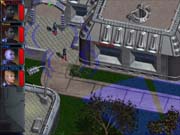
Though some of the missions in Away Team require you to achieve your goals completely undetected, many require a combination of stealth and firepower. "For Away Team, we spent a good deal of time focusing on stealth-related technologies that allow players to expand their strategies for infiltration missions, and new technologies like audio decoys, holographic projectors, and cloaking bands allow inventive players to sneak their way out of some conflicts," says Dallaire. "But there are many missions that support several types of play styles--you could charge straight into an outpost loaded with heavy weaponry, or, if you prefer, you can sneak in using items that distract enemy patrols."
The arsenal in Away Team is divided into four categories: phasers, hand-to-hand, explosives, and nonlethal stealth equipment. Ranged weapons include handheld phasers, phaser rifles, and deadly sniper rifles. While almost all crewmembers are equipped with handheld phasers (which can stun or kill), only select security and command specialists can use the phaser rifle, and the powerful sniper rifle can be wielded only by trained security officers. For putting guards out of commission for the duration of a mission, you'll want to have a trained medical officer use a neural disruptor--you've got to get awfully close to the target, but the results are worth the effort during missions in which lethal force can't be used. (You'll also be able to grab Romulan and Klingon disruptors during missions, but they don't seem to work any better than Federation phasers.)
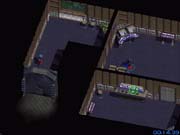
Though this is the 24th century, there's still a place for explosive devices in the type of small-scale operations you'll undertake. Concussion grenades do just what you'd expect--they cause significant damage to both organic and inorganic objects upon explosion. Two types of mines will be available: Proximity mines are triggered by nearby movement, while remote mines can be triggered from a distance and leave victims incapacitated rather than dead. Rounding out the weapons are antimatter charges for the destruction of buildings and the always useful EM pulse grenade, which temporarily shuts down electronic devices within a certain radius but causes no damage to living organisms.
Don't fret if this seems like a fairly small number of weapons, because their combat potential expands as the game progresses. "There are many weapons that the Away Team finds or creates throughout the game," notes Dallaire. "There's a reward system in the game that calculates a score after you complete a mission. If you just complete the main primary objectives, you'll receive a minimal score and eventually get some minor weapon upgrades. If you complete all the secondary objectives, you'll earn special upgrades to existing weapons and sometimes create new weapons and technologies. For example, later in the game, you'll upgrade your sniper rifles to take out an enemy in one shot and also deliver ranged explosive damage around the target. Also, you'll find a way to overload your phaser and use it as a grenade. This upgrade feature allows your team to improve over the course of the game."
Gadgets and Gizmos Galore
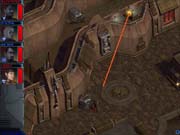
You'll get many opportunities to use those weapons in Away Team, but it's the scientific equipment and specialized skills of many of the team members that give the game its strategic depth. Need to skirt past a pesky guard patrolling the corridor of a ship? Depending on the team members selected and the skills they have, you can pretty much pick your poison. Audio decoys can be set up to create sounds that cautious enemies are sure to investigate; whether you want them to come near you so that you can incapacitate them or walk away so that you can sneak to a new location will be up to you and the mission parameters.
Even more tantalizing is a holographic projector, which can be used to create an image sure to gain the attention of enemies. In addition to using it to distract guards, you can use it as a weapon of destruction: phaser fire will pass through the hologram, and if there's anything that will blow up behind it, you could conceivably coax the enemy into destroying his own equipment or even fellow troops. The personal visual dampening field can be used by highly trained science officers to walk undetected past guards, but be careful--they can still be spotted by mechanical devices.
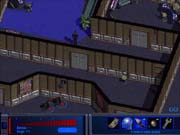
Naturally, you'll be carrying tricorders and medical hyposprays into the field, but even the most cautious commander can see that if his forces take a lot of damage, then healing everyone becomes a critical problem. In those cases, you can use the extractor to retrieve botanical elixirs from plants and convert them into healing potions--or, should the need arise, you can attempt to extract toxins, which can be used to paralyze enemies. Portable stasis fields create a stasis ring that will trap anyone who enters it, making it ideal for ambushing roving patrols and blocking entry points while you control team members in another way. To remove bodies of slain enemies so that they can avoid detection by guards, a science specialist can set up a teleporation brig in a remote spot and transport the dead to it for storage.
But of all the stuff available in the preview version we've been playing, our favorite trick has nothing to do with a newfangled gadget. It's the enhanced mind meld, which lets you control an enemy for a short period. If there's a guard stationed in a room you need to enter, use the mind meld to send him running out of the room and down a hall as you dash into the area. Should you find yourself outnumbered, meld with an enemy and have him fire on his own troops and equipment. But while it's powerful, the mind meld does have its limitations--it's effective for only a brief period, and it takes a long time for the ability to "recharge" so that it can be used again.
Complete Control--and Responsibility
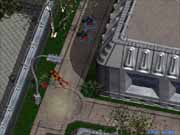
When Star Trek: Away Team ships in late March or early April, it will likely be compared to Eidos Interactive's Commando games: Both titles require you to control every single action of the troops under your command, including firing back in self-defense. Though it seems only natural that a team member would return fire, Dallaire points out that the AI used to implement it could lead to unwanted results. "We've seen instances in some games where defensive AI does not interpret the wishes of players correctly and ultimately gets the player into trouble," he says. "Because this is a strategic squad-based game, we want all of the decisions to be made by the player, but we also want to limit the frustration of being attacked while you're dealing with another encounter across the map. So we've implemented an auto-pause feature that will pause the game if a character is attacked offscreen, allowing you to jump immediately to the area of attack and take over the action."
Despite the fact that there are several team members in each of the five disciplines, the survival of every team member is always part of the mission objectives. Some might argue this robs the game of realism, but Dallaire says there were pragmatic reasons for taking this route. "As we designed the missions, we created instances where certain skills became necessary," he says. "For instance, one mission requires the Vulcan mind meld talent possessed by the engineer Slovaak. If Slovaak had died a mission before, that interaction could not be completed. We decided that the story was more important than the ability to lose a single character. We believe players will still feel that the game is nonlinear because they do get to choose their away teams based on their gameplay styles."
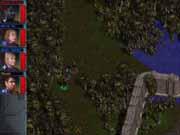
Another area where Away Team might be criticized is its multiplayer mode: Only cooperative play over a network is supported, and the lack of a mission generator means gamers who play together can choose from only the 18 missions that ship with the game. Dallaire says the reason for this is that "creating a well-rounded Star Trek squad-based game, especially from the perspective of a new Federation covert-ops squad, demanded a very specific game-design philosophy. When we balanced the 17 characters, we wanted to make sure that they each complemented the team so that each character was viable for different situations. We examined the game design at length to see if Away Team could support other multiplayer modes. We discovered that the character design was not well suited for a balanced deathmatch game--the security officers were balanced to be very effective for direct combat situations in single-player and were a bit powerful against other character classes for multiplayer." Dallaire's point is understandable, though perhaps doesn't offer the solution that some players would have prefered.
Though the preview beta version featured only four missions, it clearly reveals the potential of the basic design of Star Trek: Away Team. It also revealed several problems involving pathfinding and vocal synchronization--but fixing such problems is what beta testing is all about. Whether Away Team will live up to its intentions is yet to be determined, but the good news is that it appears to have the combination of gameplay depth and Star Trek ambience that fans of Star Trek games like to see.
Got a news tip or want to contact us directly? Email news@gamespot.com
Join the conversation